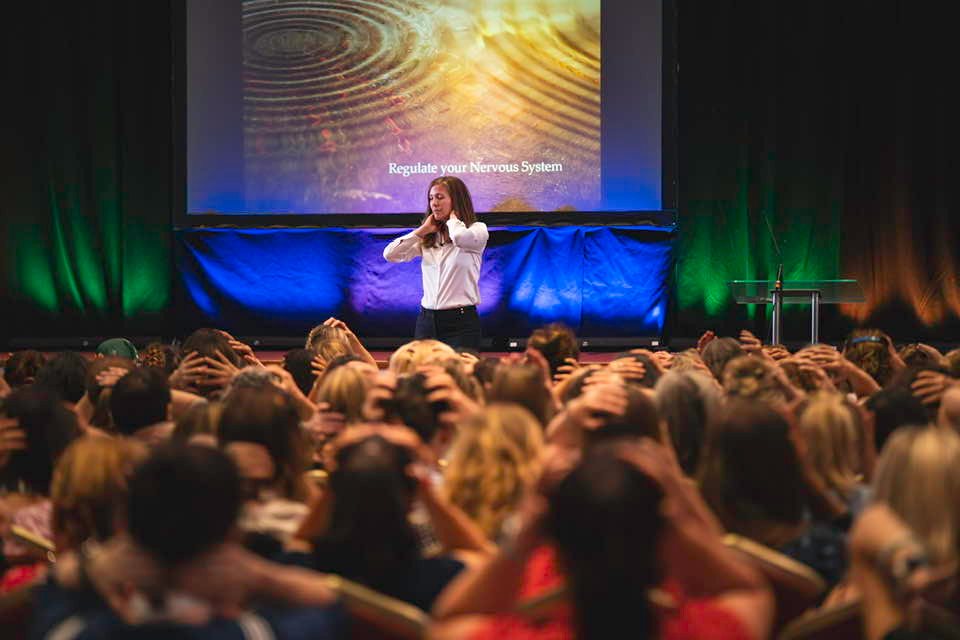According to neurobiology, a child’s behaviors aren’t necessarily “good” or “bad” but rather a wise attempt to communicate with the parent.
By Lisa Dion, LPC, RPT-S
It’s hard to understand what’s going on inside our children. Why do they throw tantrums, talk back or act up in school? And what, as parents, can we do about this? Most parent education teaches parents how to “manage” their child’s behaviors. And, an incredible amount of social pressure means we often label our child’s behavior as “good” or “bad.” The thing is that these behaviors are neither; rather they are actually the child’s brilliant and wise attempts to communicate with an adult. Furthermore, rather than simply “manage” our child’s moods and behaviors, we can instead look at the neurobiological reasons why they are acting out and then we can help shape their behavior based on that knowledge. But how? In this blog post I’ll give you some background on the neurobiology behind your child’s behaviors, and also a tip for how you can help the child regulate those behaviors.
It’s an exciting time in the field of neurobiology. Research has revealed vast amounts of information about what is actually going on in the brains and bodies of our children—who they are and what their behaviors are attempting to demonstrate. To explain why children act up in the first place, let’s discuss the brain, nervous system and how these things affect behavior.
The reptilian brain, located in the back of the head, is the oldest part of our brain and the only part of considered to be fully wired at birth. That simply means there’s a lot of activity going on at that time. The rest of the brain is developed when the child is born, but there’s not a lot of activity. The reptilian brain is responsible for a couple key pieces—the parts of our body that we typically don’t think about. For example, when we’re breathing, our arousal levels, our sleep cycles and whether or not we are hungry. The reptilian part of the brain regulates these parts of the body. It’s also responsible for our fight or flight or freeze or fall asleep response, which are the four primary responses we move into when we feel like we have to do something about a challenge at hand.
Then there’s the limbic area of the brain, which includes the amygdala, hippocampus, thalamus, hypothalamus, basal ganglia and cingulate gyrus. The amygdala is the emotion center of the brain, while the hippocampus plays an essential role in the formation of new memories about past experiences. I like to call the hippocampus the “parent to the amydala”. I’m going to propose that part of our role is to become the hippocampus to our children as their hippocampus starts to develop. Let me explain.
When the amygdala perceives there’s a threat or challenge, it sends a signal back down into the reptilian part of the brain to then send a signal to our nervous system to either rev up or slow down in order to manage the threat or challenge that is being perceived. This happens in a split second. A threat is perceived and, boom, the nervous system responds. It’s a very wise, intelligent part of the response system of our body.
However, if we walked around the world just taking in information and perceiving threats and being activated all the time, things might get out of control. And without the hippocampus, this might happen. The brain actually functions under, “guilty until proven innocent.” Thus, we will always air on the side of reacting versus not reacting, which then means that sometimes we are overreacting or reacting to things that actually aren’t legitimately threats or challenges, but the brain perceives them to be so. So the hippocampus is an important part of this process because it is actually the checks and balance system to the amgydala. It is the part of the brain that tells you that green, s-shaped thing in the grass you’re seeing out of the corner of your eye is actually your garden hose and not a snake. It tells the amygdala, “you assessed that correctly,” or “you totally missed the boat.”
Neurobiology is now teaching us that parents, caregivers and therapists can actually act as an “external regulator” for children. We can be the people in their lives who help them begin to understand whether or not they made an accurate assessment; we are the external resource that allows them to gather information about whether or not they are assessing things correctly. How do we do this? We give them feedback about their responses to what’s going on in their environment. We help facilitate the child in learning how to self-regulate. The term self-regulation refers to the ability of a child (or an adult for that matter) to be mindful and aware, think clearly, make conscious choices, notice her breath, feel grounded, speak clearly and have an experience of being in her body. When a child is connected to herself in this way, it’s unlikely that she’ll be throwing a tantrum, talking back or acting up.
However, to be able to move into helping children manage the activation of their nervous systems, we must first learn how to manage our own activation. One tool I have to help parents deal with this is using the breath. It’s phenomenal in helping us stay attuned to ourselves, to begin to manage the impulses, sensations and emotions happening in our bodies. Most of us at this point in our lives breathe incorrectly. When we are born, we are breathing in belly-breathing style. That means our belly is supposed to go out first, and then our chest goes out after that. Then our chest collapses and then our belly collapse. But most of us actually breathe completely backwards. Try it. Take a breath. Don’t change it. For most of us, we’ll notice our chest likes to go out first. So we’re actually walking around having very shallow breathing because most of our breathing is concentrated high in our chest area.
When we breathe this way we actually can create anxiety in our body, along with other types of dys-regulation—aggression, irritation and agitation. A lot of these moods actually arise simply because of how we’re breathing. So, I’m going to teach you regulated breathing. We can actually re-pattern our breathing if we do this every day for about a month. The more we do this, the more your brain will naturally move into regulated breathing as the default. You’ll find you’ll be able to manage your own emotions, sensations and behaviors to a higher degree.
Rather than breathing with your chest coming first, take a full breath with your belly going out first. Then allow your chest to fill out. Then allow your chest to collapse, followed by your belly. Imagine there’s a balloon in your core, and as you breathe the front of your body expands simultaneously with your back, and then the balloon collapses.
That’s the first part of regulated breathing. The second part is to make sure that your inhalation and exhalation are at equal count. As I mentioned before, just our breathing pattern alone can activate sensations and emotions in our body. So when our inhalation is longer than our exhalation, we create anxiety, speed up inside, become irritated and agitated. When our exhalation is longer than our inhalation, we become depressed, feel down and begin to sink. So we want regulated breathing, sometimes it’s easier to count. So count to five as you inhale, and then count to five as you exhale.
This week when you feel activated with your child, see if you can practice this!





